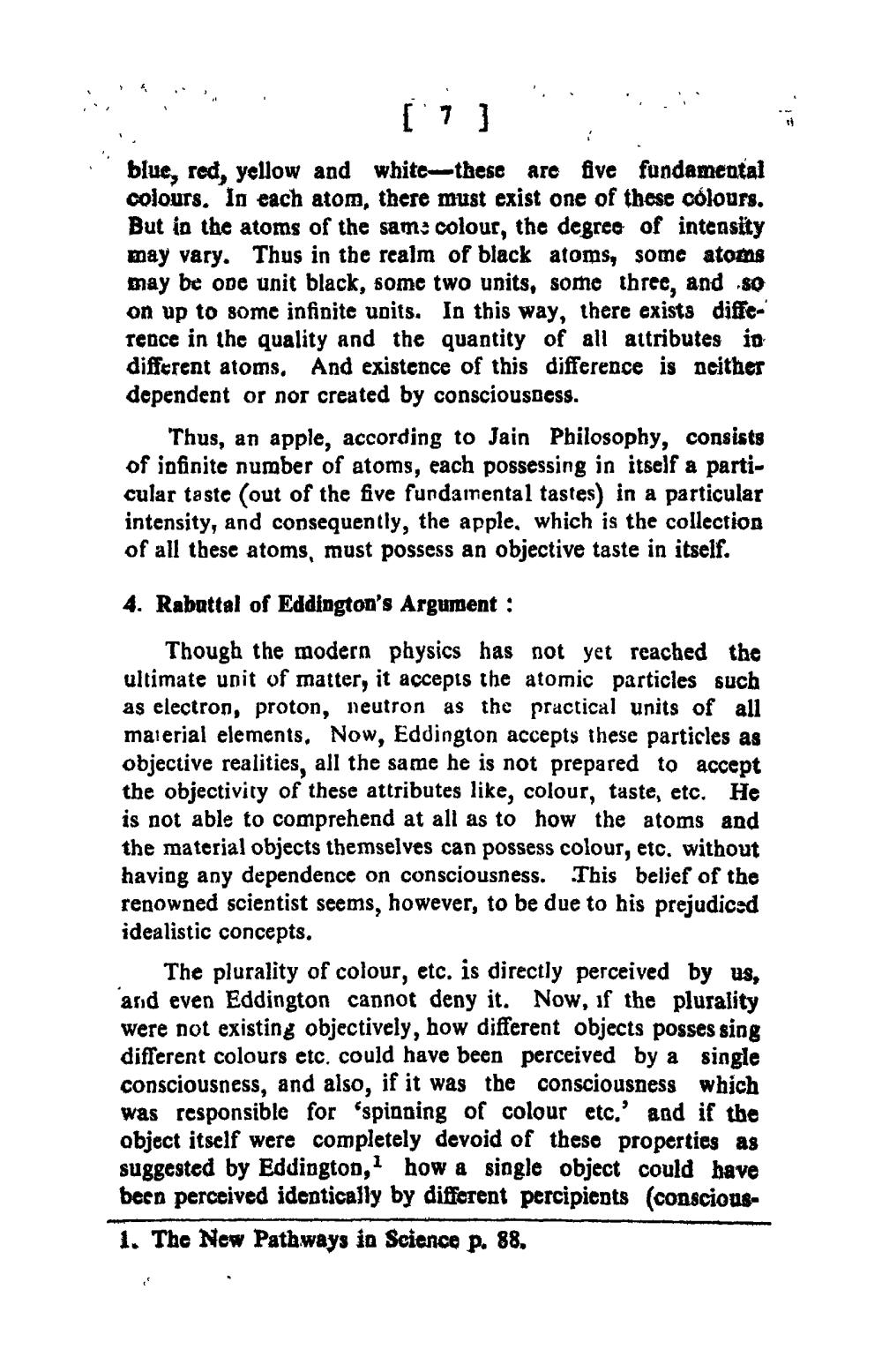________________
[ 7 ]
1
blue, red, yellow and white-these are five fundamental colours. In each atom, there must exist one of these colours. But in the atoms of the same colour, the degree of intensity may vary. Thus in the realm of black atoms, some atoms may be one unit black, some two units, some three, and so on up to some infinite units. In this way, there exists difference in the quality and the quantity of all attributes in different atoms. And existence of this difference is neither dependent or nor created by consciousness.
Thus, an apple, according to Jain Philosophy, consists of infinite number of atoms, each possessing in itself a particular taste (out of the five fundamental tastes) in a particular intensity, and consequently, the apple, which is the collection of all these atoms, must possess an objective taste in itself.
4. Rabuttal of Eddington's Argument :
Though the modern physics has not yet reached the ultimate unit of matter, it accepts the atomic particles such as electron, proton, neutron as the practical units of all material elements. Now, Eddington accepts these particles as objective realities, all the same he is not prepared to accept the objectivity of these attributes like, colour, taste, etc. He is not able to comprehend at all as to how the atoms and the material objects themselves can possess colour, etc. without having any dependence on consciousness. This belief of the renowned scientist seems, however, to be due to his prejudiced idealistic concepts.
The plurality of colour, etc. is directly perceived by us, and even Eddington cannot deny it. Now, if the plurality were not existing objectively, how different objects posses sing different colours etc. could have been perceived by a single consciousness, and also, if it was the consciousness which was responsible for 'spinning of colour etc.' and if the object itself were completely devoid of these properties as suggested by Eddington,1 how a single object could have been perceived identically by different percipients (conscious
1. The New Pathways in Science p. 88.
"




